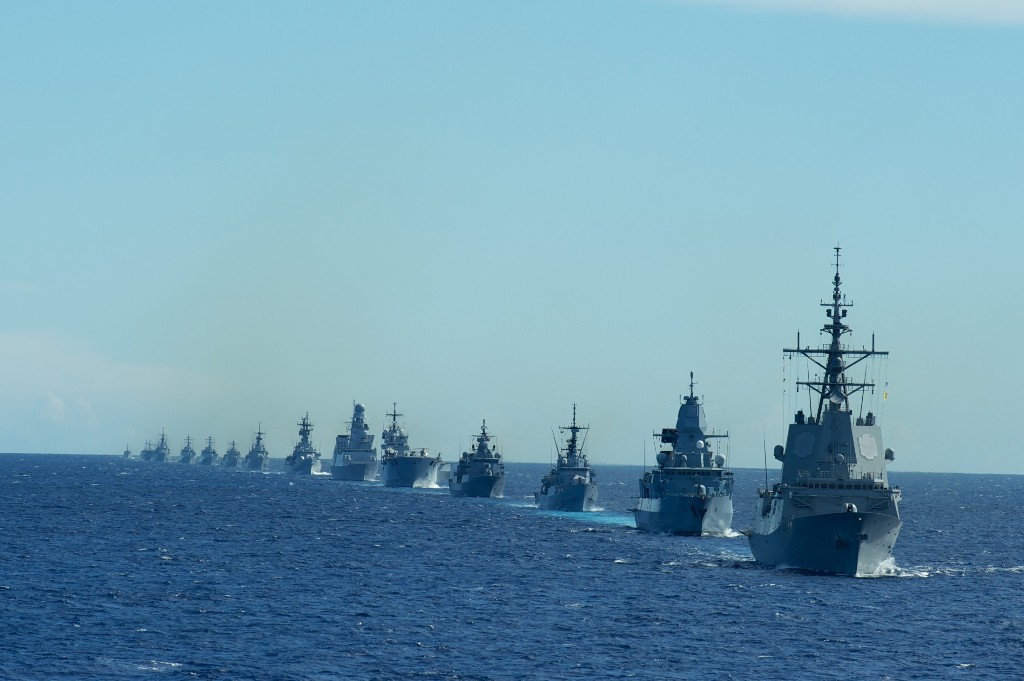
Currently taking place, "Brilliant Mariner 13" is NATO's most ambitious naval exercise in seven years, gathering 23 warships from six countries and 5,000 troops from eight nations.
From September 25 to October 6, a vast part of the Tyrrhenian Sea off the western coast of Italy has been cordoned off to allow forces to enact a classic naval confrontation, an air attack, a terrorist offensive, or even a rescue mission.
Alongside Italy's aircraft carrier Cavour are two submarines, three destroyers, four frigates and six minesweepers from Italy, Spain, Britain, Germany, France and Turkey. In total, 12 of the alliance's 28 members are taking part.
"These kinds of exercises will be one of our top priorities in the next few years," said US General Philip Breedlove, NATO's Supreme Allied Commander.
"NATO is shifting from the deployed posture to a ready posture after 2014," he added, referring to the end next year of the biggest operation the alliance has undertaken since its creation in 1949 -- the Afghan front where tens of thousands are deployed.
In all some 100,000 troops stand behind the banner of the Atlantic alliance, including in Kosovo and in Turkey, in case of a Syrian missile attack, and also in counter-piracy missions in the Indian Ocean.
"We are at the pinnacle of NATO operability, cohesiveness and capability because we have been fighting together for 12 years," Breedlove said of the military input provided by member states.
But "if we don't do something, this capability will diminish over time."
NATO's return to its old heart of operations comes amid myriad of challenges.
In a key policy shift, the United States is relocating military resources to the Asia-Pacific region just as governments across Europe cut military spending and public opinion becomes increasingly sceptical over military intervention.
But there is no question of NATO lowering its guard, particularly in the Mediterranean region shaken by the events of the "Arab Spring" taking place on its southern flank.
"Clearly the upheaval in the Mediterranean and North Africa and their weak state of governance are big concerns to the Allies and they pose potential risks down the road," said Alexander Vershbow, NATO's deputy secretary-general.
And the alliance too cannot ignore Moscow's decision to reinforce its fleet in the eastern Mediterranean because of events in Syria.
Meanwhile in northeastern Europe, another area of potential tension with Russia, NATO in November will stage its largest combined air, naval and ground exercise since 2006.
Taking place in Poland and the Baltic states, "Steadfast Jazz" will gather together 6,000 troops from 20 NATO members and partners, including Ukraine and Finland, from November 2 to 9.
Breedlove insisted that the exercise was not intended at repelling a hypothetical Russian attack.
"In the interest of transparency we have invited Russian officers to visit our exercise as observers," he said, adding that Russia for its part had invited NATO to observe its "Zapad" manoeuvres in Belarus in September.
The main thrust of NATO's 2013 exercises is to reinforce its Reaction Force (NRF), a 13,000-strong multinational army aimed at responding to an emerging crisis anywhere in the world.
The NRF, created in 2003, has never yet been used in such a situation but has taken part in rescue operations in the United States after Katrina and in Pakistan after an earthquake.
COMMENTS (1)
Comments are moderated and generally will be posted if they are on-topic and not abusive.
For more information, please see our Comments FAQ

















These military idiots must play their little games regardless of the expense to taxpayers.